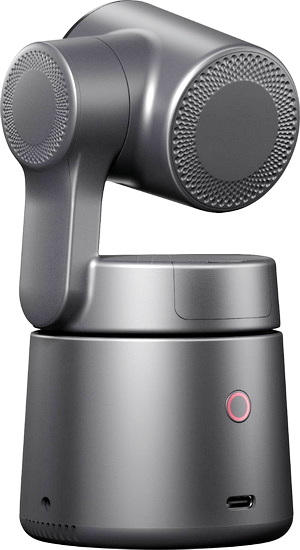CONCLUSION

Even though the Tail Air is considerably larger than the Tiny 2 (and thus may not be for everyone) size is not that bad of a tradeoff, considering that it does offer slightly better image quality even at low light conditions. Audio quality is more or less the same however as the Tiny 2 and so if you plan on using it professionally, I do recommend grabbing an external microphone for use with the 3.5mm TRS port. Regarding battery life OBSBOT may state that the 1500mAh lithium polymer battery can last up to 154 minutes at 1080p recording but at 4K you will have a hard time getting to over 100 minutes, at least I couldn’t. That being said, even 100 minutes should be plenty for most uses, not like that this is meant to shoot full length movies with. The A.I features like object tracking work well (at least with the latest firmware since that’s what I tested the Tail Air with) and the same applies for gesture control. As I mentioned earlier in my review there’s not much in the manual about the cooling inlet/outlet, but it does make sense that the Tail Air may get hot at times so if you can have that port open, I suggest doing so (again, this should had been referenced in the manual). Another useful feature is the microSD card slot (recommend using the fastest UHS-I card you can find for optimal results) but you may have a hard time inserting and ejecting the card with your hands (can be easily resolved with the tip of a pen or something equally small). My sole “issue” with the Tail Air is one that I was expecting from the get-go, motion fluidity. Yes, the Tail Air does a great job when it’s wired but wirelessly, well let’s just say that I had to have it inside an 8 meter radius from my router (max) in order to not have a huge delay between what I did and when the video would show up on my screen. Now I do have to admit that this only happened at 4k@30fps recording and also that I don’t have the best Wi-Fi setup in the lab (nor at home for that matter) and this could well be a compatibility issue with my AVM modem/routers but again, this is an issue others may face as well. As for the various accessories OBSBOT has for their Tail Air the remote control did come in handy when I had to control the camera from afar (faster than using my smartphone) and as for the USB-C to RJ45 adapter even though I ended up just using it for like 10-15 minutes I do see how it could be of use, especially in professional environments. Of course, the 360 degrees charging dock seems to be the most interesting among the accessories but unfortunately OBSBOT didn’t send it to me so I can’t really comment about it.
The Tail Air is at least a step up from the Tiny 2 and well, that’s something OBSBOT rightfully charges for. To be more precise at this point in time the Tail Air (plus tripod version) retails for USD 473.18 inside the USA (Amazon.com) and for 605.42Euros inside the EU (Amazon.de), a price tag which at least for me doesn’t feel out of place for one such product (for others it obviously will). At the end of the day the Tail Air has a specific target audience, professional streamers and well, for them all its features will come in handy. On the other hand for regular users and even enthusiasts I think the Tiny 2 represents a better choice, not because it costs significantly less but also due to its size. With that out of the way however the Tail Air is the best all-around camera I’ve used to date and for that it clearly deserves the Platinum Award.

PROS
- Build Quality (Metal Enclosure)
- Overall Size
- Wired & Wireless Connectivity
- Image / Video Quality (4K @ 30fps With HDR)
- Audio Quality (Dual MEMS Microphones)
- PTZ Function (2 Axis Gimbal / 6 Axis Gyroscope)
- 1500mAh Rechargeable Battery (Up To 154 Minutes)
- Voice & Gestures Control
- MicroSD Card Slot (Up To 512GB)
- Beauty Mode (Streaming)
- NDI / HX3 Support
- Available Accessories (Remote / USBC To RJ45 Adapter / 360 Degrees Charging Dock)
- PC & Smartphone Software
CONS
- Price (For Some)
- WiFi Video Delay (4K)

 O-Sense
O-Sense







.png)

